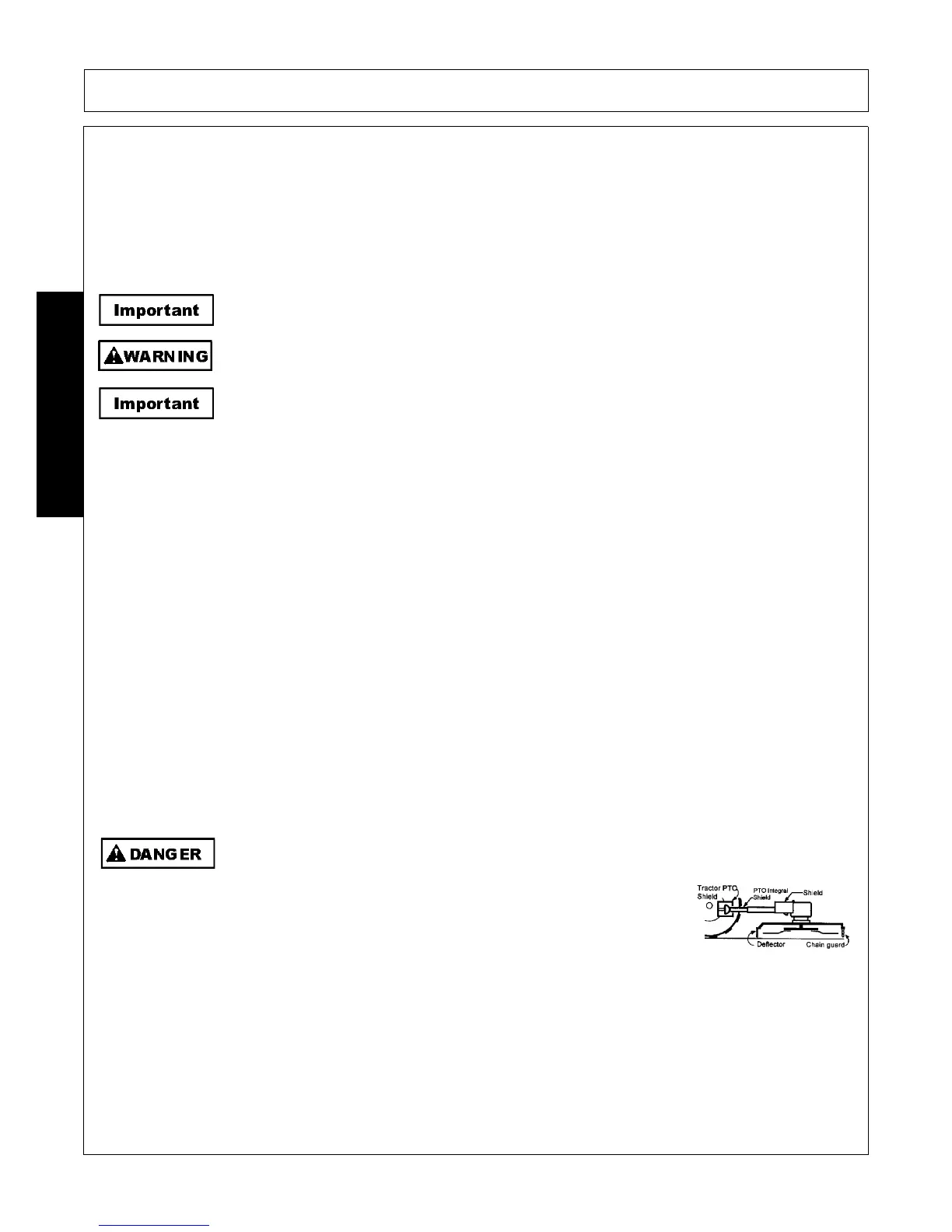MAINTENANCE
160 07/12 Maintenance Section 5-12
© 2012 Alamo Group Inc.
MAINTENANCE
BLADE CARRIER INSTALLATION
Clean the splines on both the blade carrier and output shaft. Position carrier on the gearbox output shaft and
install special washer nut.
Tighten nut holding blade carrier to minimum 450 ft. pounds, strike the carrier near the hub several times with a
heavy hammer to seat the hub. Use a suitable spacer over the nut to prevent damage to the nut and threads.
Retighten the nut to 450 ft. pounds. Install cotter pin and spread.
Always recheck gearbox output shaft slotted blade carrier retaining nut torque after a few
hours operation.
Avoid personal injury. Do not work under cutter without support blocks to keep frame from
falling.
Operating the mower with a loose blade pan or holder can damage the taper connection on
the gearbox output shaft. To ensure proper seating between the blade holder and output
shaft, check and tighten the retaining nut after the first day of operation. Recheck the blade
carrier attachment each morning before operating. Grasp the carrier firmly with both hands
and try to push and pull the carrier with one hand while pulling and pushing with the other
hand to try to rock or oscillate the blade carrier. If the carrier is loose, retighten the retaining
nut before operating the mower.
SLIP CLUTCH
If a slip clutch is incorporated in the PTO driveline, it is designed to slip, absorb the shock load, and protect the
driveline.
After the first hour of operation, the slip clutch should be checked for overheating. After this first check, the slip
clutch should be checked weekly or anytime there is overheating. To adjust the slip clutch, tighten the spring
nuts 1/8 (maximum) turn at a time. Bolts should NEVER be adjusted to the point where the springs are
compressed solid.
The slip clutch should be checked periodically and adjusted to compensate for wear. The lining plates are 1/8”
thick when new. Replace after 1/32” wear. If the mower has been idle for an extended period of time, or in wet
weather, before operating check to make sure the friction lining plates are not frozen or rusted together. Should
this freezing occur, refer to the procedure described in “Seasonal Clutch Maintenance”.
There are two friction lining plates in the slip clutch. These should be checked weekly for oil or grease, wear,
and moisture which could cause corrosion on the drive plates.
All Safety Shields, Guards and Safety devices including (but not
limited to) - the Deflectors, Chain Guards, Steel Guards, Gearbox
Shields, PTO integral shields, and Retractable Door Shields should
be used and maintained in good working condition. All safety
devices should be inspected carefully at least daily for missing or
broken components. Missing, broken, or worn items must be
replaced at once to reduce the possibility of injury or death from
thrown objects, entanglement, or blade contact.
(SGM-3)

